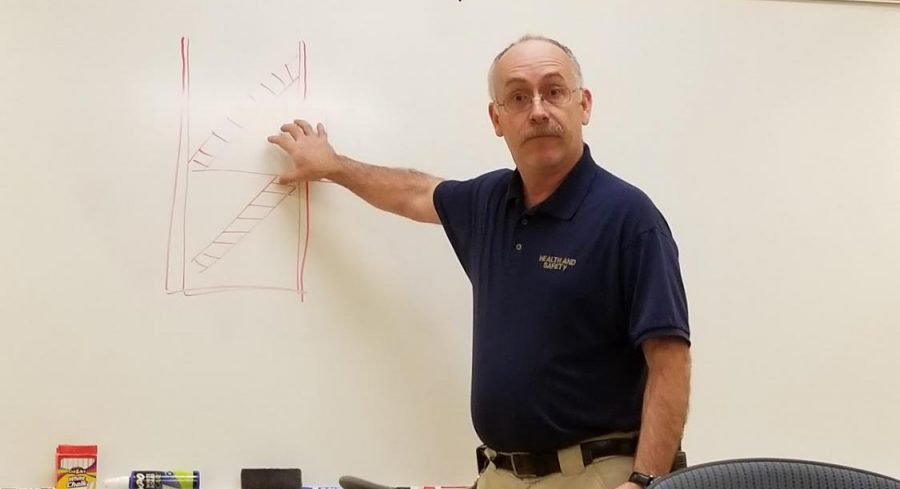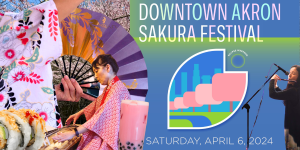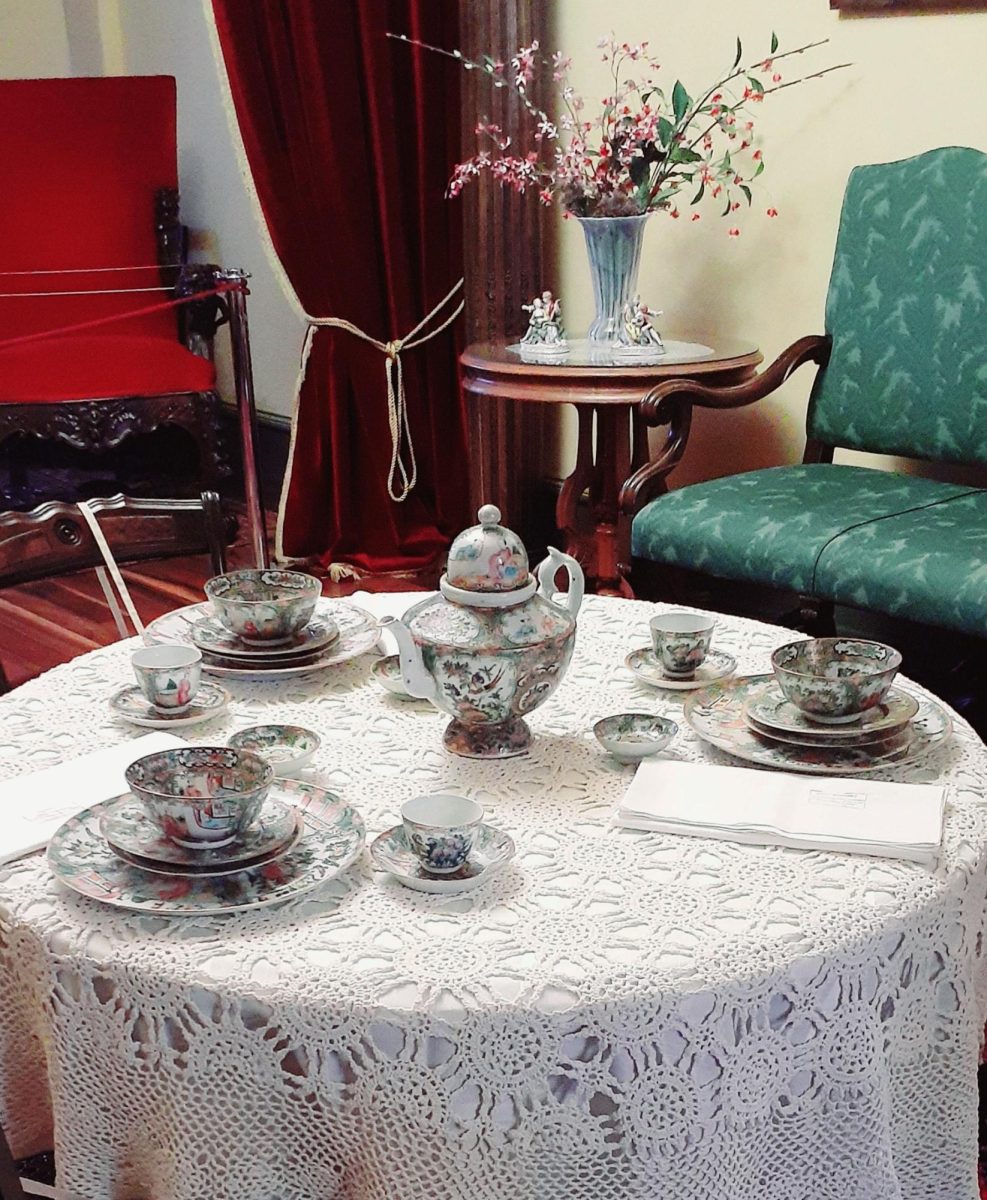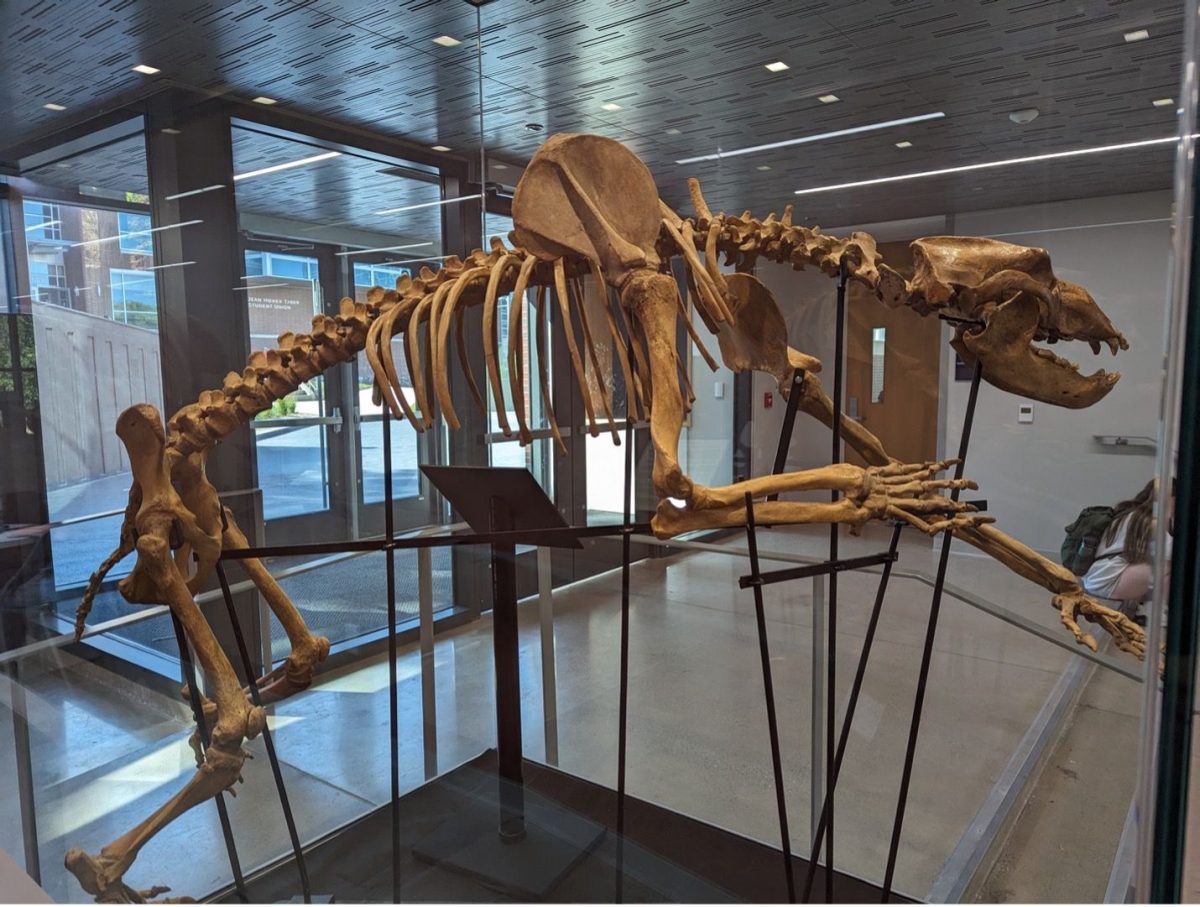Campus Safety for People with Disabilities
Increasing awareness towards the plans set in place to keep people with disabilities safe during emergencies.
David Tiller, Director of Environmental and Occupational Health and Safety, explains why stairwells are a safe place for people with disabilities to seek refuge.
March 2, 2018
During a false fire alarm instance in Leigh Hall, I was on the third floor wondering how to get out of the building. As a student with physical disabilities, I started thinking about what other people with disabilities should do in emergency events.
Mark Beers, Emergency Management Coordinator, said safety services do not always know how many people with disabilities are in a building during an emergency. Although Beers receives a list of students with disabilities from the Office of Accessibility, the list only contains those who have registered with them.
Jessica DeFago, Associate Director of the Office of Accessibility, said students with disabilities are not required to register or release information to the Office of Accessibility.
“There is definitely an internal process for individuals that are registered with our office that may need assistance for evacuation. However, everybody that may need assistance [is] not required to get registered with our office. That is how they may not always know who is in those buildings or not,” DeFago said.
David Tiller, Director of Environmental and Occupational Health and Safety, said campus education on safety protocols and exits is extremely important because not everyone knows where exits or safe places may be.
Senior Stephanie Vaughan-Fanizzi said that she normally does not think about safety and accessibility because she can reach safety easily if something happens on campus. However, her friends with mobility issues do not have the same opportunity to get to safety.
“Navigating the campus with a friend in a wheelchair made me very aware of the accessibility on campus,” Vaughan-Fanizzi said. “I feel that at every level, accessibility should be discussed more.”
When asked about what students with disabilities should do first during a fire alarm, Tiller said the student should head to a stairwell.
“The majority of the stairwells are safe construction and rated construction. It has a self-closing door and there is no storage in stairwells, so it gives you an area to seek refuge in,” Tiller said.
However, Beers said the student should wait before heading to the landing area by the stairs until all students have cleared the stairwell because the landing area is not always big enough to fit a lot of people.
“That’s a big thing I see a lot of times because our landings aren’t as wide as they should be. And if you get that person in there in a wheelchair and you get all these other people coming down through there, it could clog up the stairwell,” Beers said.
Beers said a person with disabilities should never use the elevator when a fire alarm is going off, even if it is a false alarm. In order remain the safest and be the most prepared, people should treat each alarm as if it were a real emergency.
Tiller said during a real fire, the smoke detectors will keep the elevator from taking a person to the floor where the fire is located. Also, the elevators could shut down if smoke or water gets into the elevator room.
Tiller said once the student is in the stairwell, they should call 911 to give emergency responders their location and to receive assistance. If they are on a safe floor, assistance could simply be communication because “the biggest emphasis on getting [someone] safe” is putting out the fire or stopping the hazard in the building, Tiller said.
Ashley Poulos, Disability Specialist and Service Coordinator, believes getting this information out to able-bodied students is also extremely important so they can help in the most effective way during emergency situations.
Able-bodied people may not understand that students with disabilities should seek refuge in stairwells. These students can help by telling emergency responders the location of the student with disabilities, Beers said.
“Let’s not add to the potential emergency. If we can get somebody to a nice safe area, let’s take care of what the emergency is. That person is in a nice, safe cocoon,” Tiller said.
Although no one knows when or where these emergencies may happen, Tiller believes the most important thing a person with disabilities can do is to have a safety plan set, no matter if traveling, going to school or staying home.
Tiller said the National Fire Protection Agency lists multiple emergency planning guides for evacuating people with disabilities. According to the NFPA website, these provide information on “the five general categories of disabilities… and the four elements of evacuation information” people will need.
Having a safety plan, before the start of the semester, helps all students feel more confident and prepared if something were to happen on campus, Poulos said.
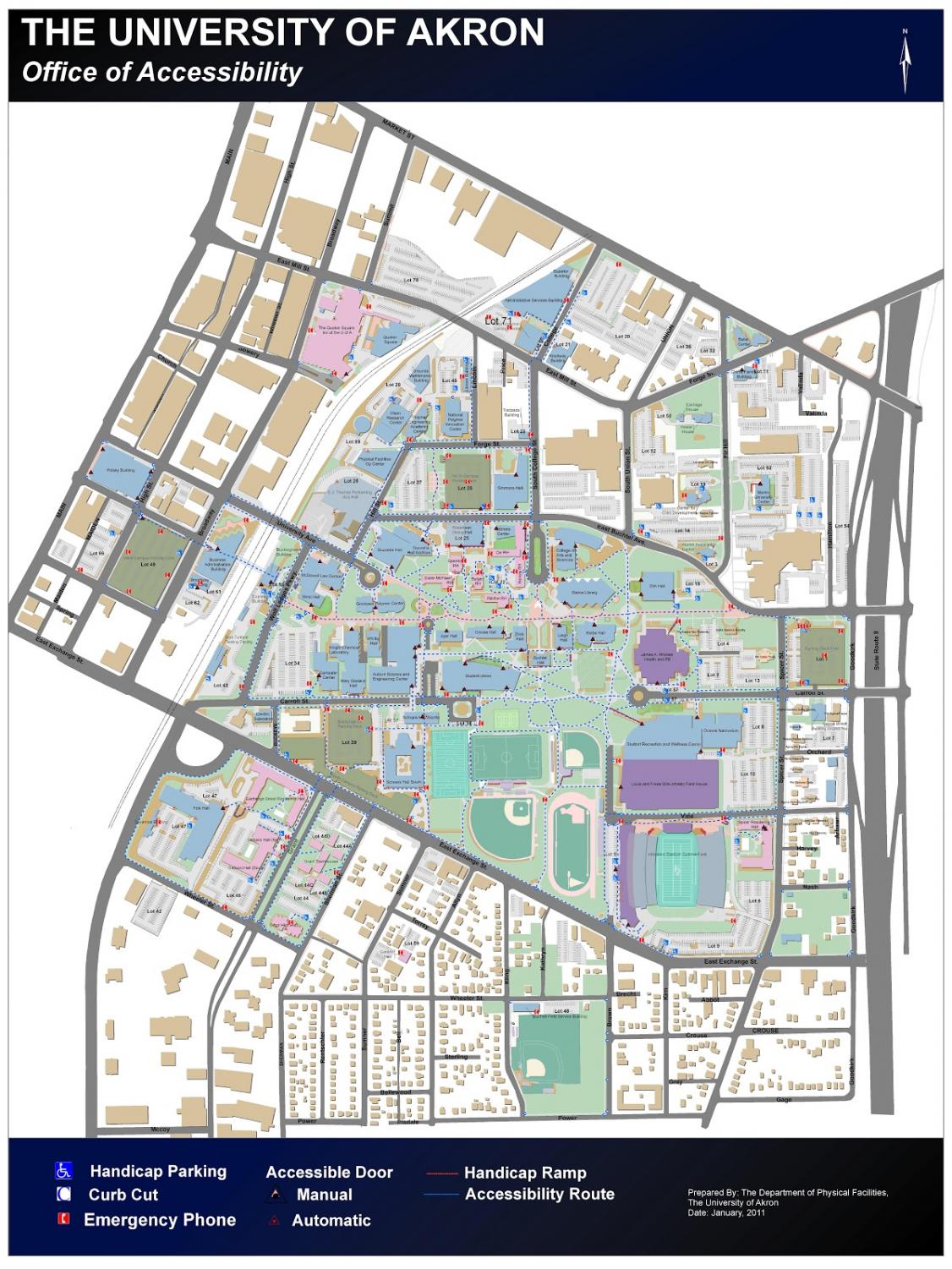
“I think it really comes down to, especially for [people] with disabilities, is… disabilities management. Knowing your surroundings, having a plan for any scenario and having that awareness so if something were to happen, you would know where to go,” Poulos said.
Vaughan-Fanizzi believes that although the University is doing a great job with the safety of all students, the safety of students with disabilities should be more discussed across campus so people will feel better informed on the topic.
“Safety is a huge concern. But if we all took the time to fully think about how our daily lives would be if we had mobility issues and what obstacles we might face, we could start there and try to remove those obstacles for our peers and friends who have to deal with them,” Vaughan-Fanizzi said.

